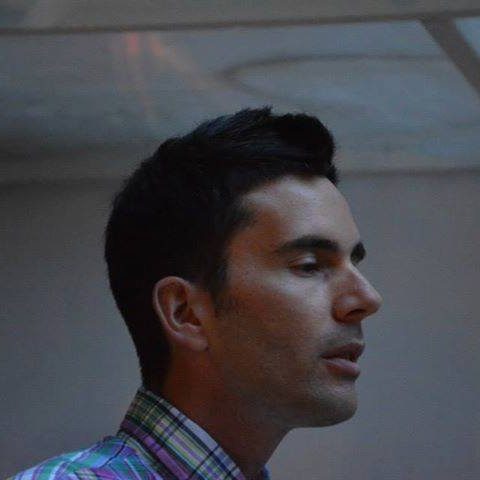Sports science
Publication Types:

Towards a surveillant reality in tennis
Here we attempt to present an application of epistemologically significant concepts that have already been described in depth in previous works. First and foremost, we refer to the dual paired method(s) of epistēmē, which is critically different from the scientific method due to a very common misconception ubiquitous among scholars and academics al over; but we also refer to surveillance, theory and truth, as well as the two new, save relevant, concepts of surveillant reality and experiential reality. The example is taken from tennis, a field to which one of the authors regularly contributes. We shall attempt to explore the ways in which the dual paired method of epistēmē is applied to sports science (in tennis) and, based on that, to clarify the concept and the differences between surveillant reality and experiential reality.

What Can the Great Traditions of Mankind Teach to Sports Scientists?
The ontology of Sports Science is well-defined with its various themes and subjects being studied
and presented in various works such as journal articles and textbooks, as well as by being in the
curriculum of the various university departments. However, there is much to discover when turning
our gaze somewhere else, to Traditions and Great Schools that have been dealing for many centuries
with the development of many aspects of what we now call “expertise”. On the spiritual side,
the Traditions included in this study extend from Yoga to Taoism and from the various Tantras to
Kabbalah. On the artistic side, Schools such as Iwama Aikido, Wing Tsun, and Russian piano School
have been considered. Classic Epistemology is also taken into account. Be it out of ignorance or out of
hesitance, seldom do we turn our gaze to discover the richness such Traditions have in so many aspects,
no less in matters pertaining to Sports Science. This paper is a first effort to map some of the most
important findings several such Traditions treasure and keep for their practitioners. The results of this
exploration consist of insights about overlooked performance parameters such as breathing, slow
practice, visualizations, sleep practices, basics, relaxation and psychotherapy.

The Bridge between Abstract Biomechanics and Tennis Strokes
Abstract biomechanics, by definition, are biomechanics in theory, without any application
(therefore a geometrical representation of movement). When referring to (abstract) biomechanics
and to (applied) technique (“technical form”) their relationship is blurred, not to mention there is
no method to effectively make the transition from the former to the latter. In this paper, these
terms are explicated and the connection between them is restored through a bridge, called the
operating principle or mechanism of the technique. The exemplary field of application is the sport
of tennis. In tennis, the operating principle is not of course all that is needed to develop technical
form (the application of the theoretical model on one’s body). It is the first step from at least three
more, the other ones being the “reference points” and the shot teaching mechanism (the latter
being substantially different from the mechanism of the technical form presented here). However,
the idea of the operating principle (of the technical form) has never been presented before for any
sport. The implications of these insights are important both methodologically and for the
development of a teaching method for tennis technical form. Finally, this paper itself bridges two
gaps: theory to practice and epistemology to science.
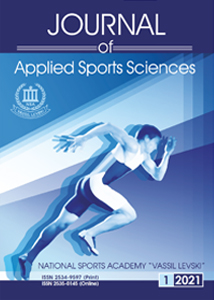
Palmaris longus muscle contribution to maximum torque and steadiness in highly skilled grip and non-grip sport populations
Background: The anatomy, origin, function, and appearance of the Palmaris Longus Muscle (PLM) in different populations are well studied. However, little is known about its contribution to wrist fl exion movements in sports. This study investigates whether the existence or absence of the PLM affects maximal torque output or torque consistency of submaximal wrist fl exion moment.
Methods: One hundred ninety-seven well-trained sports students were clinically examined to ascertain the presence of the PLM. Forty of them from different sport disciplines were assigned to two groups (athletes in handgrip sports: HG, athletes in non-handgrip sports: NHG). Their 80 upper limbs were divided based on the PLM-presence/absence and hand-dominance/non-dominance. Maximal Isometric Torque (MIT) at 150º, 180º, and 210º wrist angle, and torque steadiness at 150º and 180º, at 25%, 50%, and 75% of MIT were measured on a Humac Norm dynamometer.
Results: In all MIT tests, HGs signifi cantly surpassed NHGs, independently of the dominant or non-dominant side in presence of the PLM (p <.05). Steadiness was signifi cantly higher in HGs than in NHGs in dominant hands having the PLM, at 25% and 75% of MIT at both angles (p <.05).
Conclusions: It is concluded that the existence of the PLM provides an advantage in sustained handgrip sports (throwers, racquet sports, basketball, handball players), contributing positively to decreased torque variability and
higher maximal torque independently of muscular length. Important implications for sports performance and injury prevention have also resulted.

Force Steadiness during Submaximal Isometric Plantar and Dorsiflexion in Resistance Training: Experienced vs Non-experienced Individuals
The purpose of this study was to determine differences in force steadiness during submaximal plantar flexion (PF) and dorsiflexion (DF) of the dominant leg between individuals experienced and not experienced in resistance training. Forty males aged 18-32 were divided in two groups based on their experience in resistance training (experienced – not experienced). Evaluation of maximal voluntary isometric force was carried out on a Humac-Norm isokinetic dynamometer. The measurement of the maximal voluntary contraction (MVC) was measured in 3 isometric attempts. Then, the stability measurement of 10%, 30%, 50% and 70% of the MVC was assessed. The duration of the isometric contraction was 10 seconds but only 6 seconds were analyzed. T-test for independent samples and ANOVA was applied for the statistical analysis. The results showed that the individuals with more experience in resistance training presented a significantly higher MVC and force steadiness of the plantar and dorsiflexors muscles, compared with the individuals with less experience (p < 0.05). In conclusion, the years of practice with resistance training appear to have a beneficial effect on force steadiness.

The Tennis SensoriMotor Synchronisation Paradigm
The author proposes a new Paradigm for both research and practice regarding tennis. Sensorimotor Synchronisation (SMS) is the scientific field studying how people may synchronise their actions to an external stimulus (a pacer). SMS provides the most relevant set of concepts to tennis because synchronisation with both the ball and the opponent is the most decisive factor for performance: ball directionality, early preparation and economy of movement are all affected by good synchronisation skills but not so much by reaction time. In martial arts schools, synchronisation is the golden chalice of superior performance, which leaves many questions about the choices that have been made in tennis. Here, after a mini-review of SMS-related concepts and terms, an SMS application to tennis will be proposed and some drills will be described for the first time. Not all questions will or can be answered here, however a new Research Programme should be emerging: as is the case in all Programmes and Paradigms, they cannot be directly tested but they offer the background for specific experiments to follow. Tennis SMS is also compatible with bioinformatics since expert systems may be developed to both monitor and improve synchronicity.

The Distal Method Coach Development for tennis: a new Paradigm in Coach Education
Coach Development Programs have multiple aims, for example, to provide trainers and educators with knowledge and tools, to keep them up to date or to refresh already known concepts. Distal Method is a generic method for motor-expertise attainment. It has been created based on findings from the scientific disciplines relevant to motor-expertise in order to develop world-class performers in motor-expertise-related domains. The Distal Method Coach Development (DMCD) for tennis is presented here. DMCD is in line with modern educational paradigms such as Physical Literacy (pedagogy), Deliberate Practice (Science of Exceptional Achievement) and the Secondary Synthetic Coach Model (SSCM). The aim of this article is twofold: i. to provide a broad overview of all the work done regarding the tennis DMCD over the years, and ii. to both fill the gap in tennis Coach Development systems and to provide a high standard in that area.
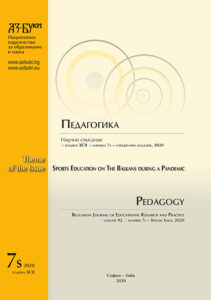
Online Coach Development Components: the Tennis Distal Method Coach Development
Taking for granted the new standards in sports in regard to the recent, still-evolving pandemic, Coach Development is seen through a new prism, based on the experience gained from an online tennis Coach Development course. At First, the role of the coach is discussed as an expert generalist and then the ideal components of Coach Development systems are presented. Finally, it is discussed whether these findings may be applied to online learning.
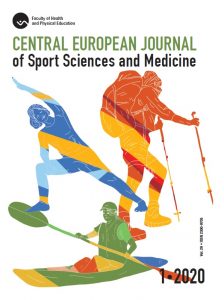
Online coach development and certification programs in sports: are they possible?
Anticipating the inevitable shift of coach education and Coach Certification Programs (CCP) to distance-learning platforms in the imminent future, I have attempted to identify obstacles that we are likely to face. After explaining the rationale and the potential benefits of such courses, I have identified
technique as the most difficult component to both teach and evaluate. A specific viewpoint regarding technique is briefly discussed and several related guidelines are provided to assist in both teaching (coach education) and evaluating technique (CCP) within the context of distance education.

On Sports Biomechanics Methodology
Sports biomechanics is one of the most fascinating and formalised disciplines in sports science. While it uses a host of methods, on closer look, it lacks a thorough epistemological / methodological foundation besides what it implicitly borrows from the sciences it uses, such as mathematics and physics. Here, I shall attempt to portray what such a basic epistemological understanding would include and also try to address issues directly related to such an approach. I shall start by describing the most general context in which sports biomechanics exist and then, I will attempt to provide a structural context to bridge the gap between sports biomechanics and practice. Concluding with some ideas about the future of biomechanics.
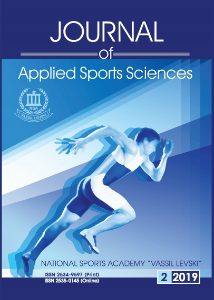
Exploiting the Cognitive-Physical-Emotional interconnection: Motowords and the Distal Method
Background: communication between the trainer and the athlete has been studied in terms of feedback, but not in terms of codifying information for instruction; here implications for cognition and cognitive skills is also discussed.
Purpose: to present a new tool, motowords, a verbal codification tool between the athlete and the trainer that also provides many side benefits: it helps adjust the Degrees of Freedom of a drill, it employs cognitive functions, it fosters active participation of the athlete and it bridges the gap between serial and random practice. Moreover, we intend to theorize on how the positive effects of motowords are multiplied when combined with drill-synthesis and drill-structure, as well as with differentiated (self)training, concepts that aim at increasing the ecological validity of training sessions.
Method: the theoretical background supporting the effectiveness of these tools is discussed.
Leads: to a broader vision about the important role of cognitive and emotional skills within a holistic context aiming at developing “literate” individuals rather than just motor experts, which, both the former and the latter, are at the very core of the Distal Method for expertise attainment.
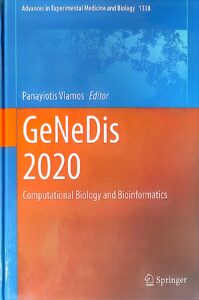
Expert characteristics: implications for expert systems
While expert systems are Artificial Intelligence (AI) agents, they share many common characteristics with human experts. As technology progresses, such systems are not just able to make simple decisions following “simplistic” linear logical protocols; they “behave” as real experts in at least two ways: by demonstrating superb decision-making skills and by conforming to the social norms for expertise, i.e. they “feel” as human experts. A review of the common characteristics of human experts may have important implications for the direction of the development for such systems. Implications for bioinformatics and future research (esp. concerning the accompanying concept of “expert generalist”) are also discussed.
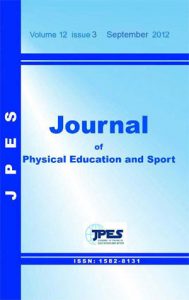
The distal method: From psychomotor education to motor expertise
A unifying theoretical model for motor expertise attainment is presented. Based on an extensive theoretical background several practical applications are discussed examples are given and guidelines are proposed. The main tenets of this approach called “The Distal Method” is that motor expertise development should be based on i. processes that impact the future and not (necessarily) the present ii. motor skills and cognitive skills are coupled iii. emotions are the substrate for any development to take place. The basic tools of such an approach will be presented here which could act both as a guide and a model – or even a paradigm – for successfully developing and refining psychomotor skills from early on.

Theatre pedagogy and the Distal Method in psycho-social development (Greek)
The triple identity of the empowering action coordinator (a poor translation usually used is “animator”) includes the roles of the scientist, of the artist but also of the healer – the mediator to higher consciousness levels. The paper goes on to locate theatre pedagogy within the paradigm of the Distal Method; actually quite a widespread one, since theatre pedagogy may be used for many purposes, either in isolation or in combination: as a psychotherapeutic tool, as a learning tool, as a social and emotional developmental tool, as the context of training (style), or as just fun.
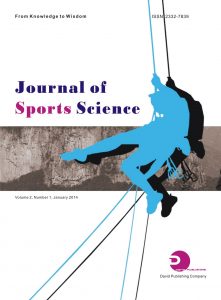
Physiological Changes after One Month of Exclusive Supplement Consumption and Exercise: A Case Study
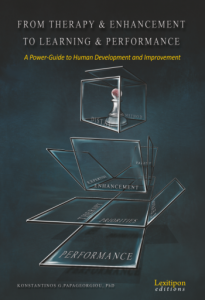
From Therapy and Enhancement to Learning and Performance
Therapy, learning, enhancement, performance: four words that reveal the broad scope of this book; four words that are not just four separate subjects; revealing their interconnections is the main focus of this book. Subjects, ranging from C. Jung’s psychoanalysis to K.A. Ericsson’s Deliberate Practice, or from R.G. Hamer’s “New Medicine” to the author’s Distal Method, all these give a deeper meaning to the book’s title – a fresh outlook on these overused words.

The Subtle Colourings of (informed) Consent in Sports Doping
It discusses in what way do athletes consent in using doping; can it just be a matter of black and white, consenting or not consenting? I argue that it is a more complex process and I suggest a method for exploring consent types.
After presenting a multipole of consent-cases, I argued that it is not just a matter of black or white as far as consent is concerned for the doped athlete. The athlete, any athlete, may come from the most diverse environments being forced to succeed at any cost; forced by whom? By their peers, their trainers, their broader environment. For the athlete, it may be a matter of life and death (as it was for e.g. USSR athletes, or as it partly is now for athletes who have spent a fortune in training academies only to try to make amends with their future success).
The very knowledge background of an athlete, or of their team, also plays a crucial role in their decisions. Issues of trust, ignorance, too much goodwill, wishful thinking, even habit, all come into play. Hence, we need a consent system that accounts for all these cases – and even more. How do we produce such a system? Should we create a catalogue of real cases and then try to find an adequate form of consent?
In contrast to usual scientific practices, this is both sub-optimal and contramethodological. Taking as our starting point the analytic method, we are able to create, a priori, all cases of consent; only after do we apply them (link them) to reality. Therefore, we get cases such as “uninformed consent”, “not uninformed consent”, “intentional uninformed consent”, but also “unintentional exposure”, “not unintentional protection” and hundreds of other consent-related propositions. The next step would be to attribute meaning to as many cases as possible and only then are we allowed to go to the world and discuss the athlete’s behavior in terms of consent.

The Subtle Colourings of (Informed) Consent in Performance Enhancement: Implications for Expertise
The analytic method, part of the epistemonic method, provides us with a way to cope with perplexed cases, without even referring to the world out there. We are able to predict all possible variations of consent, and go on forming minimum logical quadripoles, 8-poles, 16-poles, etc., before even trying to make any connection to the world. This way, there are two major outcomes: All possible scenarios are predicted, and, because of that, our “logical generator” produces scenarios we couldn’t even think of. Consent is, therefore, neither binary (existence or absence), nor just a continuum from existence to absence, but a cladistic tree stemming from the basic quadripole “existence of consent/not existence of consent/absence of consent/not absence of consent.” The complexity increases rapidly when other terms are included; try: “existence of informed consent” or “existence of unintentional consent.” More levels develop as we examine relevant terms, such as “exposure,” “protection,” or “consumption.” In our case-study, we shall examine how different aspects of consent are expressed regarding the issue of performance enhancement and consider some implications for the notion of expertise within an SEA (Science of Exceptional Achievement) context. Many different terms may describe the most common situations, namely, “uniformed consent,” “unintentional consent,” “non-intentional consent,” “not absence of consent,” and also, “unintentional exposure,” “intentional non-protection,” and so on. In Greek language, the possible variations are even more (there are two kinds of negation in Greek). All the aforementioned terms have different ethical consequences. We shall also examine whether doping is an inherent part of expertise attainment.
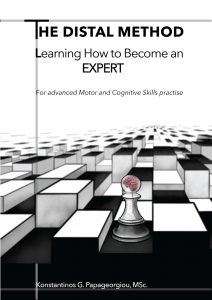
Distal Method is the product of years of research in the domain of motor and cognitive learning and performance. It is a method for attaining world-class expert performance in any domain that uses motor skills: surprisingly, not only in sports, music and art (as if they were not enough!), but also in many cognitive domains that rely on procedural memory or, more generally, may benefit from the tight motor-cognitive relationship. Based on this specific work at hand, the author has already published numerous journal articles and books.
ISBN: 978-960-93-9225-9
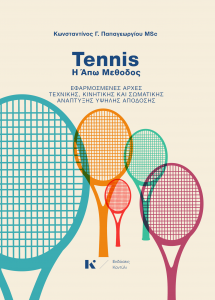
Tennis: the Distal Method -- Applied Principles of Technical, Motor and Physical High-Performance Attainment (Greek)
The basic textbook of the application of the Distal Method to tennis
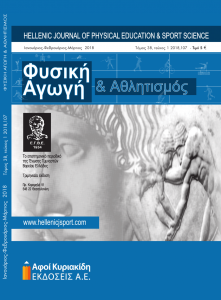
Performance Spiral effects on Motor Learning: the case of tennis serve
Performance-learning distinction necessitates the development of novel models to measure
performance meaningfully, i.e. in direct relation to the “invisible” learning. Such models should
have direct practical implications. Performance Spiral (PS) is such a model and incorporates
findings from motor learning & control disciplines (Contextual Interference, practice schedules,
dynamic system theory), Sports Training (speed-assisted / resisted training) and insights (Slow
Practice) from traditional major schools in music and sports. 11 subjects (age M=31, intermediate
level) in two groups, one control (6) and one PS-trained (5) were measured in speed and accuracy
progression of tennis serve, which would denote motor learning. After two months, while the
classically-trained control group did not show any statistically significant change in performance,
the PS-trained group increased their accuracy significantly. PS model is effective in producing
motor learning in tennis serve. These preliminary results are discussed and future directions are
given.
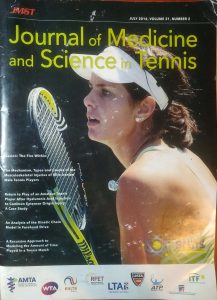
An Analysis of the Kinetic Chain Model In Forehand Drive
This article in JMST lays the foundations of the biomechanical model of the tennis Distal Method, as well as an application in the forehand drive (since applications are always important for such practice-oriented journals). The concepts presented in this article are relevant to the technique of all tennis shots.
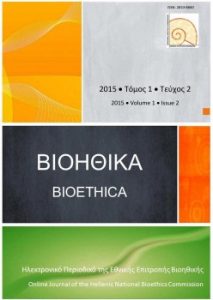
Talent as an unintentional agent
Unintentional exposure is a novel concept. No single person has coined the term. It mainly refers to
substances and activities affecting individuals without their consent – be it informed or not. In the
broader field of applied ethics in general, and of bioethics in particular, the scope of application
extends from nutrition (GM, functional food), to pollution (chemical-, air-, light-, noise-, radioactive
contamination etc.), climate change, embryo rights, drug side-effects (especially in regard to
chemotherapy), radiation (e.g. food), Permissible Exposure Limits, education and (bio-)terrorism. In
the discussion about talent and giftedness, there are two main approaches or schools of thought. On
one hand, talent is conceived as an exclusive agent, in that some individuals are born more capable
than others. On the other hand, a different school of thought advocates the modification of body and
mind of all individuals in order for them to achieve similar levels of high performance. In the first
case, individuals are bound to their nature, while in the latter instance they are prisoners of their
environment –two equivalent positions in terms of autonomy and freedom. The latter will be argued to
be the case; as a result, a connection with unintentional exposure will be established.
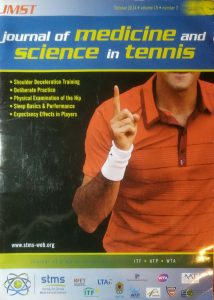
Deliberate Practice in Tennis
Is there a way of practice that is beneficial to tennis? Indeed, there is: Deliberate and well-structured practice. This article attempts to describe the model of Deliberate Practice (DP) and its potential applications to tennis
